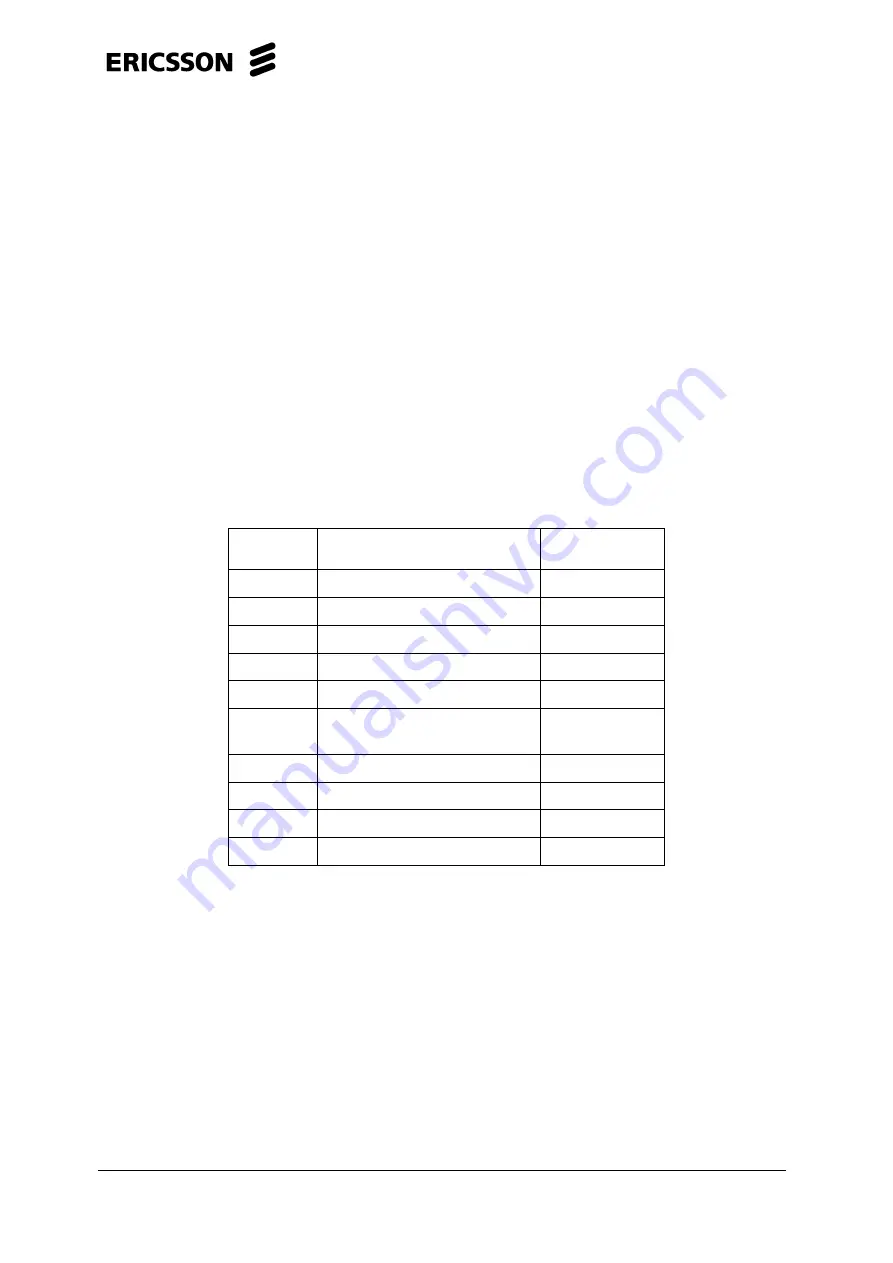
Marconi OMS 1200
Technical Product Description
221 02-ZAP 701 25/1 Rev C 2006-08-04
© Ericsson AB 2006
03PHB00004AAV-CUA
Commercial in confidence
125
(136)
The defaults are fault reporting enabled for USE alarm reporting.
The attributes that are configured for fault reporting will be applied to the
enable/disable states of the SD signalling flag.
Note:
The signal degrade fault type works on BIP bit equivalent binary error ratio
calculations (e.g ratio 10e-6). The USE fault type works on the crossing of a
threshold of consecutive severely errored seconds. These are calculated for
each PDH port by the protected port bearing PDH interface units.
Note:
Degraded path performance can be based on USE or Consecutive
Degraded Seconds (CDEGS). Separate configurable thresholds are
provided for SES (performance monitoring) and DEGS (events handling).
Note:
You can configure the signal degrade fault type to work on BIP BERs, or
CDEGS.
7.9.2.2 Priority
of
Failure Conditions
The PDH port selected as the source of selected traffic is as shown in Table 7-18.
Table 7-18: PDH Port - Priority of Failure Conditions
Priority
Switch State
Selected
Channel
1
Forced Switch (Protection)
Working
2
Forced Switch (Worker Channel)
Protection
3
Signal Fail (Protection)
Working
4
Signal Fail (Worker Channel)
Protection
5
Signal Degrade (Protection)
Working
6
Signal Degrade (Worker
Channel)
Protection
7 Manual
Switch
(Protection) Working
8
Manual Switch (Worker Channel)
Protection
9
Wait To Restore
Protection
10
Do Not Revert
Protection
The controller-derived switch interface parity failure generates injection of TU-AIS in
response to tributary card-out indications and ports to protection switching criteria.












































